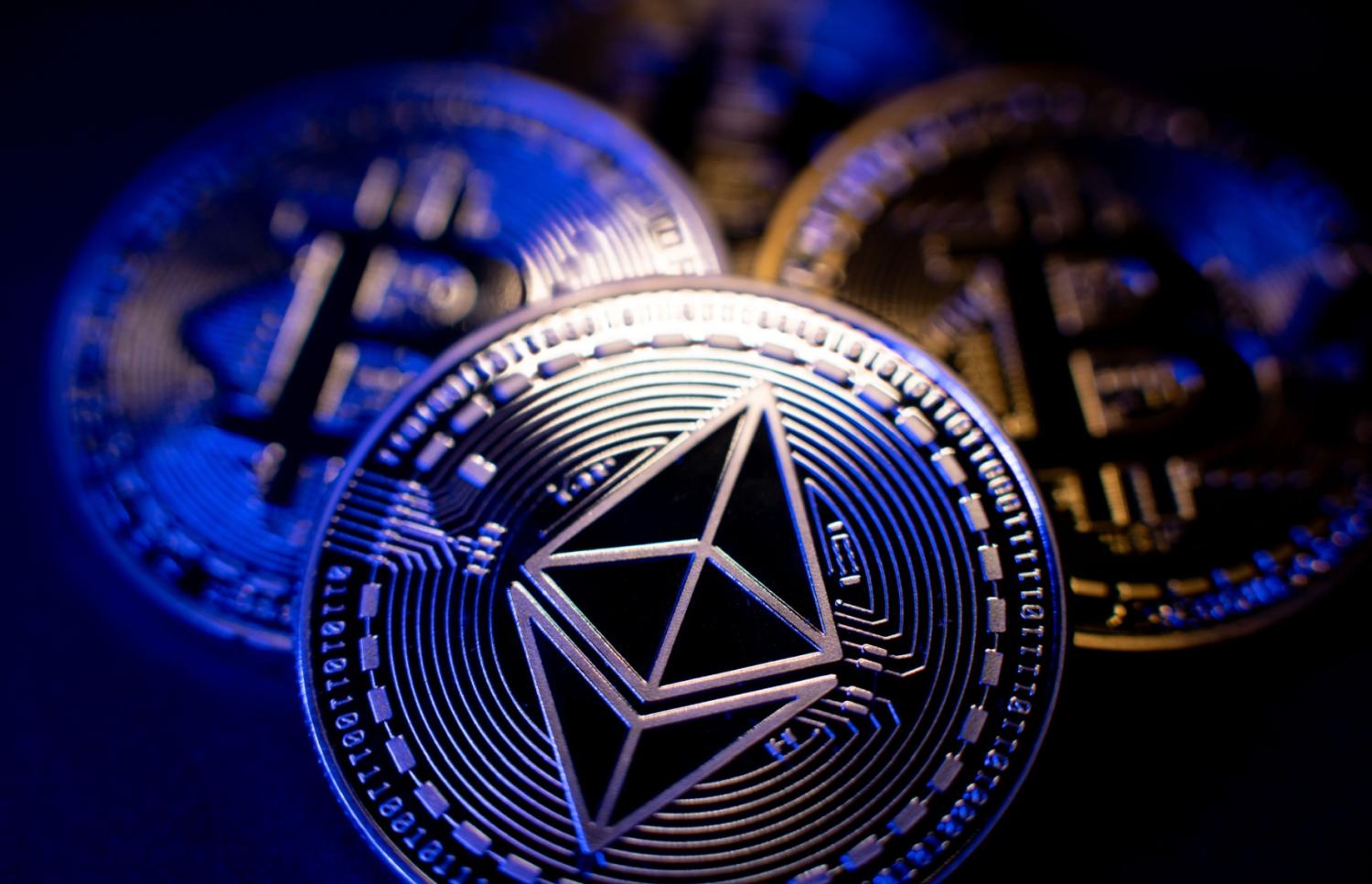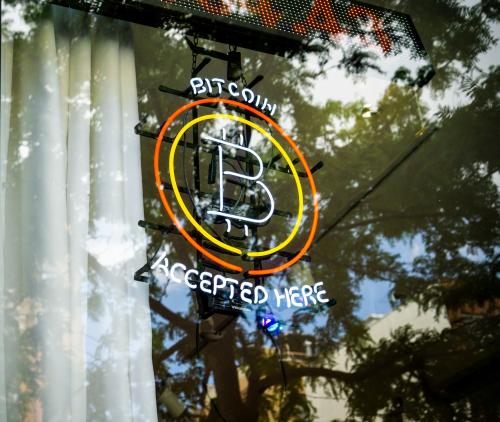1. Introduction: The promise and peril of blockchain
Blockchain technology was envisioned as a tool for decentralization—removing intermediaries, distributing control, and fostering open participation in a wide variety of digital arenas, from finance to content creation. However, as blockchain platforms scale, they exhibit a troubling trend: Power is concentrating among small groups of dominant actors. This re-centralization undermines blockchain’s original promise, creating risks similar to those seen in traditional digital monopolies.
Addressing this challenge is complex because blockchain governance is often opaque, stakeholders operate across jurisdictions, and regulation must strike a careful balance. While targeted interventions can help preserve decentralization, overly restrictive measures risk being ineffective, curbing innovation, or driving activity into less regulated spaces. Policymakers should focus on enhancing transparency, preventing excessive concentration of control, and promoting governance models that maintain decentralization without stifling innovation. Potential measures include promoting more equitable governance models, increasing transparency around token concentration and voting rights, and implementing safeguards against the undue influence of dominant stakeholders. Decentralized Autonomous Organizations (DAOs) and alternative governance mechanisms—such as capped voting rights or quadratic voting—offer potential solutions but require regulatory oversight to ensure they function as intended. Additionally, increased scrutiny of powerful actors can help prevent the emergence of concentrated control within ostensibly decentralized networks.
If left unchecked, emerging blockchain platforms may follow the same trajectory as centralized platforms like Meta, Google, and Amazon, which prioritize efficiency at the cost of openness and competition. Preventing re-centralization will require a nuanced policy approach—one that balances oversight with blockchain’s decentralized ethos to ensure it remains an open and resilient digital infrastructure.
2. Understanding re-centralization in blockchain
At its core, blockchain technology is designed to distribute control among participants, aiming for decisions to be made collectively rather than by a central authority. This principle is embedded in the governance models of blockchain platforms, where decisions are made by platform participants—as described below, either token holders or validators (or miners).
Governance models in blockchain platforms
Blockchain platforms employ a variety of governance models to distribute decision-making power so that decisions are made collectively rather than by a central authority.
Consensus mechanisms as governance foundations
Blockchain platforms rely on consensus mechanisms to validate transactions and secure the network. By requiring participation from a broad network of miners or validators, consensus mechanisms aim to achieve a decentralized and transparent system of governance.1 The two most widely adopted approaches are:
- Proof-of-Work (PoW): In PoW systems like Bitcoin, miners compete to solve complex mathematical puzzles to add blocks of transactions to the blockchain. The first to solve the puzzle is rewarded, but only if subsequent miners verify the validity of the block. This incentivizes network participation and validity of the blockchain. The same decentralized approach applies to system updates—there is no central authority deciding which blocks are accepted, how the system is updated, or who can participate as a miner. This mechanism is designed to prevent fraudulent reuse of the same coin (called double-spending) and aims to ensure that no single entity can easily dominate the network.
- Proof-of-Stake (PoS): In PoS systems, like Ethereum currently, validators are selected to propose and verify new blocks based on the amount of cryptocurrency they have staked, i.e., locked up as a form of collateral. Validators are rewarded for honest participation, but they risk losing a portion of their staked funds—a process known as slashing—if they propose invalid blocks or act maliciously. Unlike Proof-of-Work, PoS eliminates the need for energy-intensive mining. Participation is open to anyone who meets the staking requirements.
Token-based governance
In token-based governance, governance tokens represent a form of ownership or voting power within a blockchain platform.2 These tokens are often issued by the platform and can be acquired through participation, trade, or as rewards for contributions. Holders of these tokens vote on critical decisions such as protocol upgrades, fee structures, or resource allocations. For instance, participants may vote to approve changes to the platform’s code or to introduce new features. The weight of each vote is usually proportional to the number of tokens held by a participant, a system intended to reflect stakeholder investment in the platform.
Decentralized Autonomous Organizations (DAOs) are a prominent implementation of token-based governance. DAOs allow token holders to vote directly on governance matters, embodying the principles of decentralization. Examples of DAOs that implement token-based governance include:
- Uniswap (UNI): A leading decentralized exchange where UNI token holders vote on fee structures and liquidity incentives.
- MakerDAO (MKR): The governance framework for the DAI stablecoin—digital asset pegged to the U.S. dollar—where MKR token holders decide on risk parameters and collateral types.
- Aave (AAVE): A decentralized lending platform where AAVE token holders can vote on protocol updates and reserve management.
- Compound (COMP): A decentralized lending protocol where COMP token holders vote on governance proposals, including interest rate models and system upgrades.
Despite their decentralized design, blockchain governance structures are vulnerable to re-centralization. In practice, both consensus and token-based governance mechanisms can lead to power concentration among a small number of influential actors.
As a paper by Bakos and Halaburda finds, in token-based governance large token holders often gain disproportionate control over decision-making, effectively sidelining smaller participants. For example, in some DAO platforms, governance votes are dominated by a few major investors who hold significant portions of the governance tokens, allowing them to determine protocol updates unilaterally. Academic research has uncovered instances of this in platforms like Compound, where eight addresses control approximately 50% of the voting power, significantly influencing governance decisions, particularly in areas such as protocol updates, interest rate models, and system upgrades. Similarly, MakerDAO’s core decisions have often been influenced by a small number of MKR holders.
Consensus mechanisms also exhibit centralization tendencies. In PoW systems, miners often join forces in mining pools—collaborative groups that combine computational resources to increase their chances of earning mining rewards. Over time, mining pools have consolidated power, with a few dominant pools—like AntPool and ViaBTC in Bitcoin—controlling the majority of the network’s computational power. This raises concerns about the risk of coordinated attacks or transaction censorship, where dominant actors could selectively exclude or delay certain transactions from being processed.
Even in PoS systems, validator concentration remains a challenge. For instance, since Ethereum transitioned from Proof-of-Work to Proof-of-Stake, staking service Lido has dominated for over a year with over 30% of staked Ether (though this share has recently decreased to below this threshold). Centralized exchanges like Coinbase have also accumulated substantial staking power, consolidating influence over network validation. This trend raises concerns that a few large validators may exert outsized control over protocol governance and transaction processing.
These patterns of re-centralization highlight the ongoing challenge of ensuring meaningful decentralization in blockchain governance. While the underlying mechanisms are designed to distribute decision-making power, their real-world application has often led to unintended concentration of authority, posing risks to the principles of openness and equitable participation.
3. Why this matters: The policy imperative to preserve decentralization
When properly implemented, decentralization promotes fairness and inclusive participation by ensuring that governance power is widely distributed, preventing any single group from dominating decision making or disproportionately benefiting from the platform’s success. By reducing reliance on centralized gatekeepers, decentralization allows smaller stakeholders to participate in governance and economic activities without the need for approval from dominant incumbents. For example, the governance model of Uniswap enables any UNI token holder, regardless of size, to propose and vote on protocol changes, directly influencing the platform’s evolution.3 This stands in contrast with centralized platforms like Meta, Google, and Amazon, where key decisions—such as changes to platform policies, data governance, or fee structures—are made by a small group of executives or major shareholders, leaving everyday users and smaller stakeholders with little or no direct influence. Therefore, decentralization helps prevent the concentration of power that leads to monopolistic behavior and value extraction, such as imposing high fees or collecting personal data.
Preserving decentralization in blockchain platforms is critical for ensuring competition, innovation, security, and fairness in the digital economy. Although blockchain technology was designed to prevent monopolistic control by enabling open access, censorship resistance, and fair governance though decentralized decision making, re-centralization threatens to replicate the same market power dynamics seen in traditional platforms. Unlike traditional industries, where entrenched incumbents make structural reform difficult, blockchain is still in a formative stage, offering a rare opportunity for policymakers to shape its trajectory before centralization becomes entrenched. Without deliberate policy intervention, blockchain systems may devolve into concentrated structures dominated by a few large players.
When power is centralized on a blockchain platform, a small group of dominant players controls the platform’s direction, prioritizing their own interests over the community’s and extracting value at the expense of broader participation. For example, Malik et al. (2022) show that when large miners dominate PoW mining, they drive up transaction fees and create deadweight loss. This mirrors the challenges observed in traditional centralized platforms, where monopolistic control increases prices and restricts innovation and growth—ironically, the very problems blockchain was designed to solve.
Decentralized systems foster innovation and economic growth by removing barriers to entry and enabling competition among a diverse range of participants. Unlike centralized platforms that control access and decision making, decentralized networks allow open participation, leading to a broader pool of ideas, services, and applications. This competitive dynamic ensures that innovation is not stifled by dominant incumbents. For example, decentralized finance (DeFi) platforms like Uniswap and Aave have introduced new financial instruments without relying on banks. Similarly, decentralized content platforms like Mirror allow creators to publish and monetize their work without intermediaries, and decentralized cloud storage protocols such as Filecoin provide innovative alternatives to centrally-controlled cloud infrastructure.
By decentralizing governance and development, these systems create a more resilient and competitive environment where no single entity can dictate the trajectory of technological advancement. Research underscores that decentralized ecosystems produce more sustainable innovation, as multiple independent actors can experiment, iterate, and build without restrictive oversight. Exemplifying this model, open-source blockchain networks such as Ethereum rely on global collaboration, accelerating technical progress and security improvements. This contrasts with centralized platforms, where a small number of gatekeepers control updates, impose fees, and restrict competition, often stifling new ideas before they reach the market.
One of the key advantages of decentralization is its ability to enhance security by reducing single points of failure. In centralized systems, a single compromised entity—such as a cloud provider or a financial institution—can expose millions of users to security risks. Decentralized networks mitigate this vulnerability by distributing control across multiple validators, nodes, or miners, making it significantly harder for attackers to take over an entire system.
As blockchain platforms centralize, their security benefits erode, increasing vulnerability to systemic risks. The dominance of a few mining pools in Bitcoin, for example, has raised concerns about coordinated attacks, where a small group of actors could manipulate transactions or disrupt the network. These attacks become cheaper to conduct as dominance increases. Similarly, the concentration of staked assets in PoS systems increases the risk of collusion and governance manipulation.
4. Policy recommendations: Mitigating the risks of re-centralization
If blockchain platforms are to fulfill their original vision of decentralization, targeted policy interventions are necessary to prevent re-centralization. By ensuring that governance remains distributed, competition remains open, security remains robust, and participation remains inclusive, policymakers can help blockchain technology realize its full potential as a transformative force in the digital economy. Yet, regulating blockchain to preserve decentralization is inherently challenging. Unlike traditional platforms with identifiable corporate structures and jurisdictions, blockchain networks are decentralized by design, with governance mechanisms embedded in smart contracts and decisions made by dispersed participants. Regulatory interventions must strike a balance—preventing power consolidation without undermining blockchain’s openness or driving activity into unregulated environments.
Here are possible steps:
Promote decentralized governance models:
Governments should encourage the development and adoption of decentralized autonomous organizations (DAOs) that effectively distribute decision-making power. Unlike traditional corporate structures where control is concentrated among shareholders and executives, DAOs leverage smart contracts and community voting to govern decisions. However, in practice, many DAOs suffer from governance token concentration, allowing a small number of large holders to exert outsized influence.
One illustrative example is MakerDAO (headquartered in California), where MKR token holders vote on protocol changes such as setting stability fees and managing collateral types. While this model provides decentralization in principle, in practice major investors often hold significant voting power. To address these risks, policymakers could introduce transparency requirements regarding token distribution, voting influence, and participation thresholds.
The bipartisan Deploying American Blockchains Act of 2023, sponsored by Reps. Larry Bucshon (R-IN), Lisa Blunt Rochester (D-DE), and Darren Soto (D-FL), focuses on the importance of decentralized identity and cybersecurity initiatives under U.S. leadership in blockchain technology. It seeks to provide regulatory clarity for blockchain projects while prioritizing transparency, user empowerment, and security. To achieve this, the Act encourages collaboration between public and private sectors, proposes the development of guidelines for secure blockchain infrastructure, and mandates the Department of Commerce to provide annual reports assessing blockchain adoption, risks, and regulatory gaps. If designed with safeguards against governance token concentration, such structures could help ensure that DAOs remain decentralized and resistant to control by a few dominant players.
Implement governance safeguards:
Blockchain platforms need greater transparency in governance token ownership and voting structures to prevent re-centralization. Some platforms have experienced governance crises due to excessive token concentration. For instance, Steem, a blockchain-based social media platform, saw a contentious governance dispute after a major stakeholder, Justin Sun, used his large token holdings to take control of the decision-making process. The backlash from the community led to a network split, resulting in the creation of the Hive blockchain.
To prevent similar governance takeovers, regulatory frameworks could require platforms to disclose governance token distribution publicly and impose limits on voting power per entity. The U.S. Government Accountability Office (GAO) and the International Monetary Fund (IMF) staff have both emphasized the need for clear governance standards in emerging financial technologies to ensure accountability and investor protection. The GAO has identified significant regulatory gaps in the oversight of crypto assets including governance tokens, noting that “no federal financial regulator has comprehensive authority to regulate the spot market for crypto assets that are not securities.” This lack of oversight has led to instances where “[s]everal platforms without federal oversight have experienced fraud and trading manipulation.” The GAO recommends that “Congress could better ensure users’ protection from unfair and manipulative trading practices” by establishing comprehensive regulatory frameworks.
This lack of regulatory clarity is precisely what allowed Justin Sun’s takeover of Steem, where a major stakeholder could accumulate and exercise voting power without any safeguards to ensure fair governance. The situation underscores the GAO’s concerns about governance token markets being susceptible to manipulation in the absence of oversight.
An example of regulatory intervention to counteract re-centralization is the European Union’s Markets in Crypto-Assets (MiCA) regulation. This framework imposes stringent transparency requirements on crypto-asset service providers, mandating detailed disclosures of governance structures and token distributions to curb excessive concentration of control. Such measures align with broader efforts to ensure decentralized governance remains viable in blockchain ecosystems.
IMF staff have similarly emphasized the necessity of implementing a comprehensive, consistent, and coordinated policy approach to crypto assets. They stress the importance of implementing “clear legal treatment and granular rules,” guided by the principle of “same activity, same risk, same regulations.” The IMF also highlights the necessity of “strong anti-money laundering and combating the financing of terrorism (AML/CFT), prudential, and conduct rules” to cover all entities and activities related to crypto assets. These recommendations reinforce the necessity for transparency and accountability in governance token systems to prevent undue control by dominant players, mirroring the concerns raised by the Steem case.
While direct regulation of decentralized entities is difficult, policymakers can encourage best practices through industry self-regulation—similar to voluntary ESG disclosures or anti-money laundering standards in financial markets, which often emerge in response to incentives and regulatory expectations. For example, exchanges listing governance tokens could require platforms to publish transparent voting and token concentration reports. Additionally, financial regulators can apply existing securities and corporate governance principles to mitigate the risks of undue control by dominant stakeholders. Precedents from finance and tech regulation such as shareholder disclosure rules and audit requirements could serve as models to enhance accountability without stifling innovation.
Regulate centralized actors within decentralized systems:
While blockchains are designed to be decentralized, certain actors within these networks—such as mining pools and staking service providers—have accumulated significant power. For example, Lido DAO (based in Cayman Islands) controls a substantial share of staked Ether on Ethereum, leading to concerns about validator centralization. Similarly, Binance Smart Chain operates with a limited number of validators, many of which are chosen by Binance, raising concerns about its decentralized credibility.
To address these risks, policymakers could implement:
- Transparency requirements: Mining pools and validators could be required to disclose ownership structures and control mechanisms to prevent covert centralization.
- Decentralization standards: Platforms exceeding a predefined threshold of network influence could be subject to regulatory scrutiny to ensure fair competition.
- Anti-collusion measures: Policies could be introduced to prevent dominant entities from forming cartels that undermine network decentralization.
These measures would help ensure that blockchain platforms remain decentralized, competitive, and resistant to undue influence, maintaining the integrity of their foundational principles.
Support research on new governance models:
Blockchain governance continues to evolve, and alternative models are emerging as potential solutions for more equitable decision making. The Cosmos network has promoted decentralization by gradually expanding its validator set, increasing participation and distributing voting power more widely. Another approach, quadratic voting, reduces voting power incrementally as accounts accumulate more governance tokens, helping to balance influence and prevent dominance by large stakeholders. However, for this method to be effective, mechanisms must ensure that individuals maintain only a single account to prevent circumvention of voting limits.
Governments and academic institutions should support research into these alternative governance frameworks, assessing their practicality in enhancing security and maintaining decentralization.
While these interventions can help preserve decentralization, they must be implemented carefully. Excessive regulation—such as rigid restrictions on governance structures—could unintentionally discourage participation or force blockchain projects into jurisdictions with weaker oversight. Moreover, enforcing regulations on decentralized, almost anonymous networks remains an ongoing challenge. Policy frameworks must be adaptive, prioritizing transparency, accountability, and competition while respecting blockchain’s decentralized nature.
5. Conclusion: Ensuring blockchain delivers on its promise
Re-centralization in blockchain is not an abstract risk—it is already happening. Large mining pools, staking services, and governance token concentration are shifting control away from distributed participants and into the hands of a few. Without intervention, blockchain could replicate the monopolistic structures it was meant to disrupt.
Yet, regulating blockchain is uniquely challenging. Unlike traditional firms, blockchain networks operate across borders, lack clear points of accountability, and often resist conventional oversight. Heavy-handed regulation risks undermining the very decentralization it seeks to protect. Instead, policymakers must focus on targeted interventions: transparency requirements for governance token holdings, limits on validator influence, and mechanisms that prevent governance token monopolization. Given the global nature of blockchain, international coordination will also be essential to prevent regulatory arbitrage.
Governments can promote decentralized governance by implementing transparency requirements modeled after corporate finance regulations. For example, DAOs could be subject to disclosure rules akin to Securities and Exchange Commission shareholder reporting requirements, ensuring that token concentration and voting power distribution are publicly available. Additionally, international coordination—similar to the Financial Action Task Force (FATF) framework for anti-money laundering (AML) policies—could help standardize decentralization safeguards across jurisdictions, preventing regulatory arbitrage and reinforcing fair governance practices in blockchain ecosystems. Without such measures, blockchain governance may continue to concentrate in the hands of a few, replicating the very inefficiencies and power asymmetries it was meant to disrupt.
Blockchain’s future depends on whether it can resist re-centralization without losing its core strengths. Smart policy choices can help ensure that blockchain delivers on its promise—not as another concentrated platform economy but as a truly open and competitive digital ecosystem.
-
Footnotes
- Narayanan, Arvind. Bitcoin and Cryptocurrency Technologies: A Comprehensive Introduction. Princeton: Princeton University Press, 2016.
- De Filippi, Primavera, and Aaron Wright. Blockchain and the Law: The Rule of Code. Cambridge, MA London: Harvard university press, 2018.
- To submit a proposal, an address must have 1,000,000 UNI delegated to it. They, however, do not need to be proposer’s own tokens. Any token holder can initiate a proposal by securing sufficient delegation from others.
The Brookings Institution is committed to quality, independence, and impact.
We are supported by a diverse array of funders. In line with our values and policies, each Brookings publication represents the sole views of its author(s).





